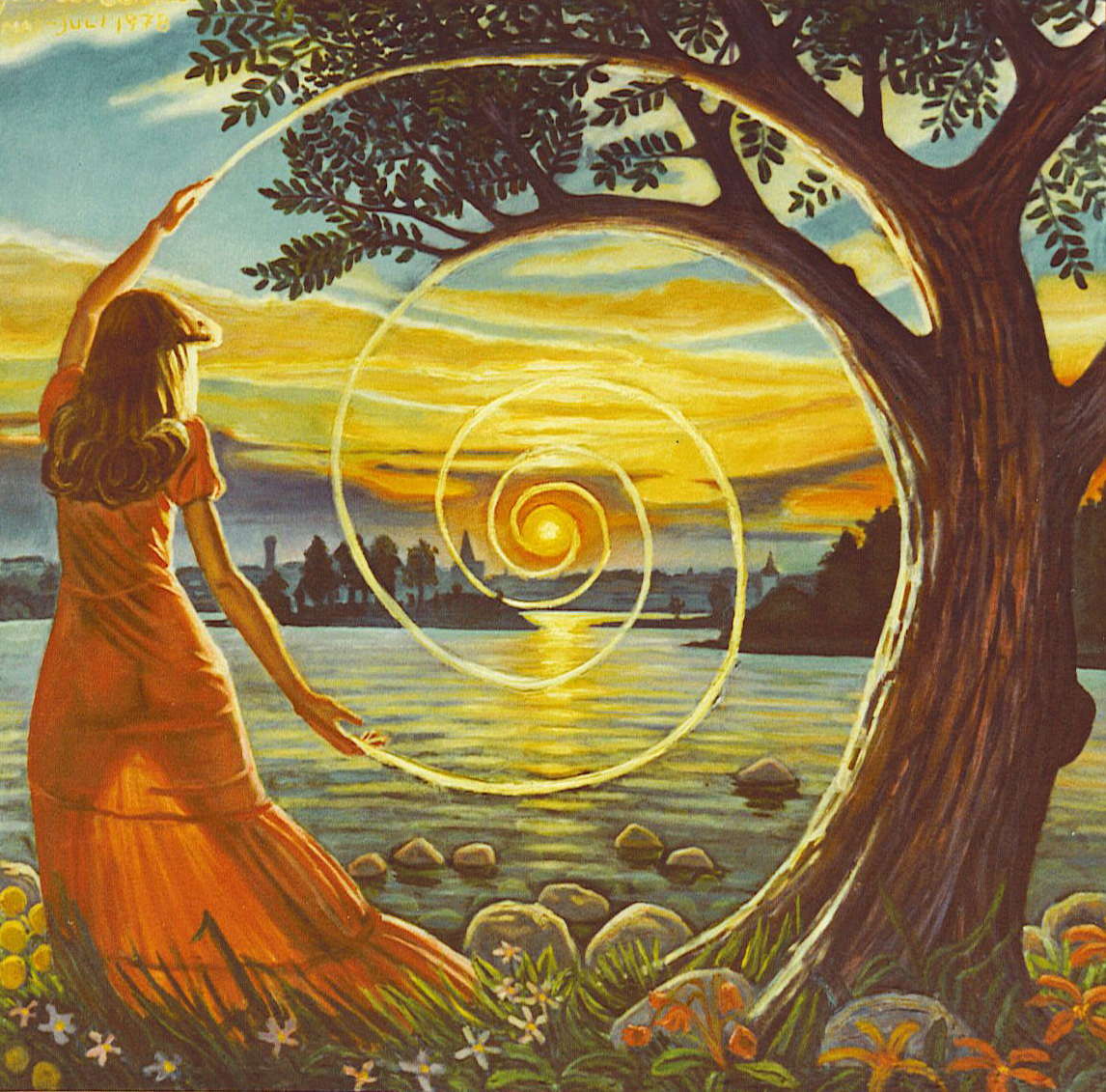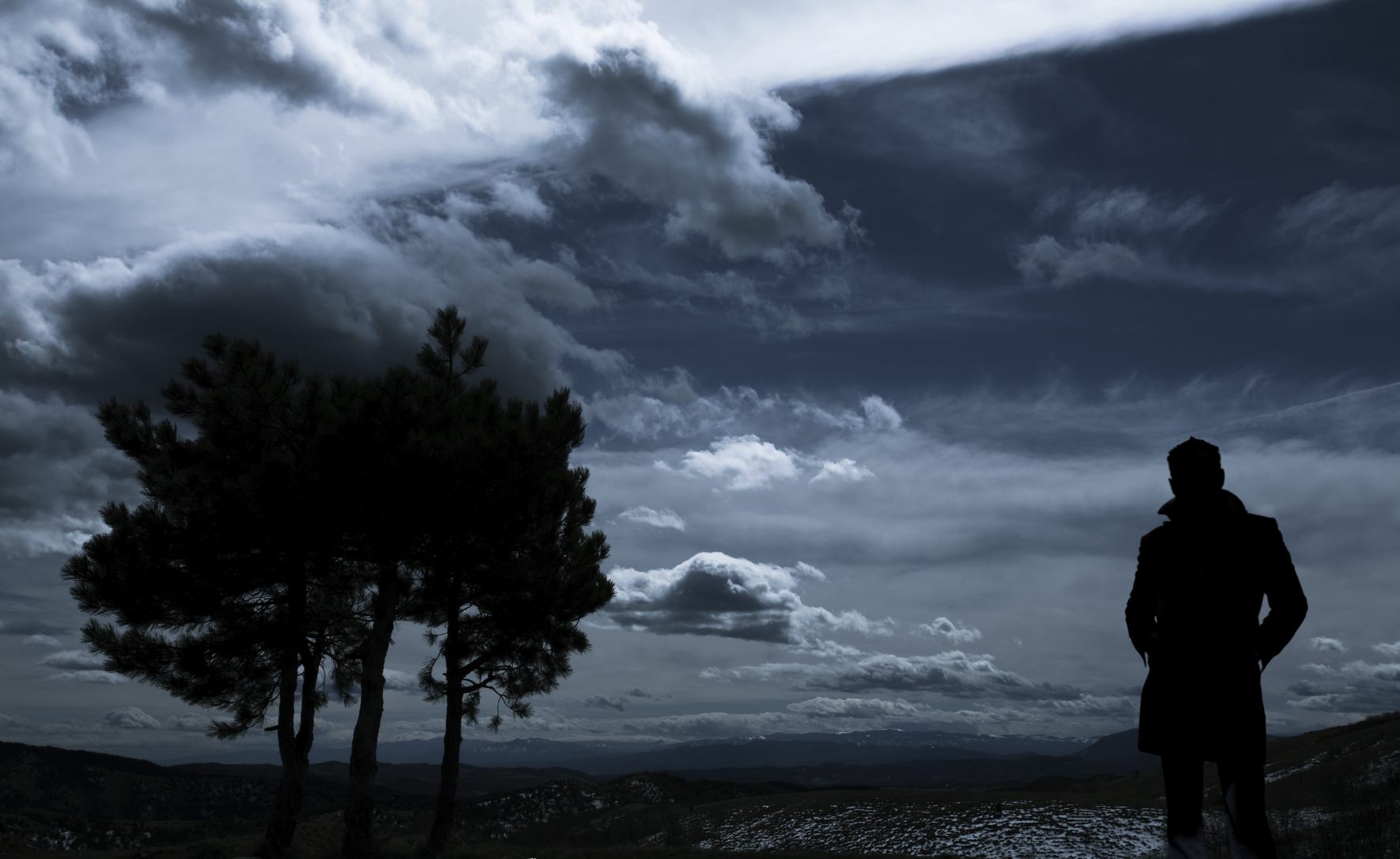Sometimes I pass these words stenciled in the center of the park road by some cynical philosopher: “Nature is wrong.” The words are fading away, which brings a smile. Nature will have the last word, whether humans find harmony with her or not.
 If the human species cannot fit on this planet, we will not find our place in the cosmos. So what is the right relationship between thought and nature? I think that’s a more accurate and penetrating way of asking what humanity’s place in the universe is.
If the human species cannot fit on this planet, we will not find our place in the cosmos. So what is the right relationship between thought and nature? I think that’s a more accurate and penetrating way of asking what humanity’s place in the universe is.
Using conscious thought, humans have been able to unlock many of the secrets of the universe, as well as strip much of the planet of its ‘resources’. But only with deep humility, and silence of mind, can one perceive beauty, feel mystery, and touch the immanent sacredness of the cosmos.
There is a vast difference between mystery and mysteriousness. What is mysterious can and should be discovered, uncovered and explained. But mystery is unalterable, and the feeling of it is essentially the same in all people of all times, whether in the cave artists of Lascaux or the men who walked on the moon.
Simply put, there is an infinite mystery, and our capacity to perceive it is diminished when knowledge is put first. To grow in the experiencing of mystery, knowledge has to be set aside, and the attentive brain allow the mind as thought to fall completely quiet.
True science dispels mysteries while retaining a feeling for mystery. Ironically, the idea that everything can be explained is anathema not just to feeling humility and mystery, but also to scientific investigation.
Scientific knowledge is rightly an accumulative endeavor, even though entire areas of received knowledge are occasionally overturned by new evidence. Scientists realize that there are always new discoveries to be made, and they continually ask questions, thereby opening up new areas for inquiry.
Mystery, on the other hand, is a non-accumulative state of being that wipes away the accretion of the known. Therefore in experiencing mystery every day, one has right relationship with life and the universe.
Conscious, symbolic thought is the most powerful adaptation that nature has evolved, and yet it is based on a principle that is contrary to the essential principles of nature. Thought separates, while nature unfolds seamlessly. Thought operates in terms of time, while nature is perpetually present.
Therefore relying on thought and knowledge to understand humankind’s place in the universe is modern man’s fundamental existential mistake.
In both the scientific and the contemplative life, insight emerges between the spaces of thought, not through any chain of thinking and knowledge.
True scientists acknowledge the immeasurable mystery of the universe.
They realize that even if all scientific mysteries could be explained, the mystery of being would remain. Therefore they don’t seek to remove mystery, but nurture a passion for continuously exploring new horizons.
Restoring harmonious relationship between humans and nature turns on our gaining insight into thought itself. The idea of ‘restoring’ is somewhat inaccurate however. Indigenous peoples often had, and have, an intuitive grasp of the limits of thought.
But their insights were expressed within the contexts of their traditions, beliefs and rituals, which are all still products of thought.
I know of no culture, ancient or modern, that is based on direct insight into the nature of symbolic thought. For a sane and balanced global culture to emerge, there has to be.
We cannot return to the indigenous ways of understanding and keeping balance with nature. Symbolic thought has produced so much disorder and imbalance that the only way ahead now is to go to the root and awaken a deepening insight into thought itself. Then a new kind of culture can and will emerge.
It’s near sunset. Riding the bike to the edge of town, where open fields are rapidly being eaten away by ‘progress’, one can see for miles. The skies are gray and opaque to the west, obscuring the setting sun, though a few remnants of the billowy white clouds that graced the day remain along the horizon to the south.
Toward the foothills, to the north, the canyon is sharply etched in the fading light. A pheasant fans its broad tail feathers and glides to a halt. A pair of Canadian geese flies in low, honking loudly.
Suddenly I see something over the fields I thought I might not see here again—a kite falcon! It’s a couple hundred meters away, but its distinctive hovering and plummeting flight pattern is unmistakable.
The falcon flies closer, directly across from where I sit. It hovers for 15 or 20 seconds before dropping gently to the ground, wings held up and back. It’s an exquisitely graceful sight, surely one of the most beautiful in all of nature.
Martin LeFevre

